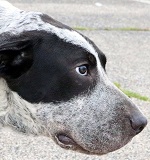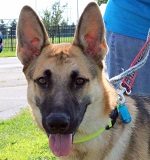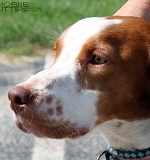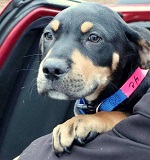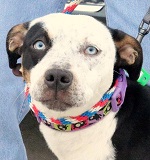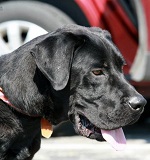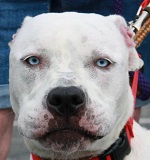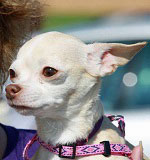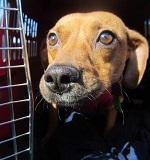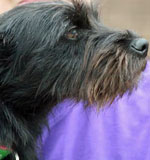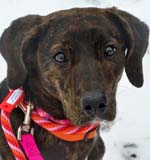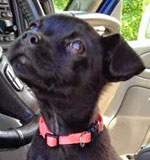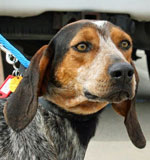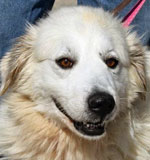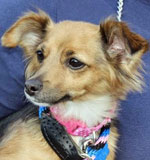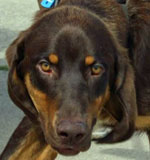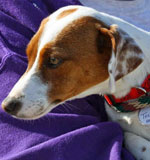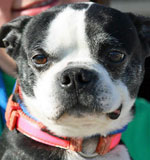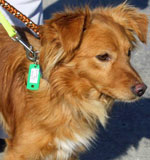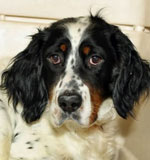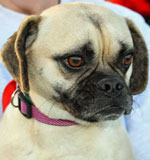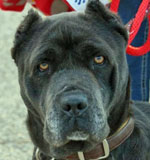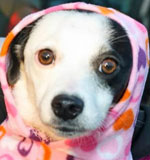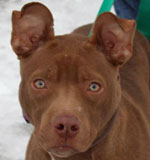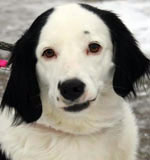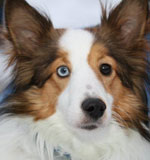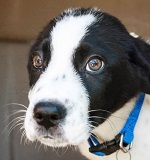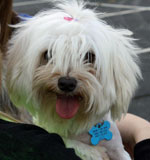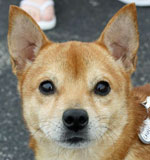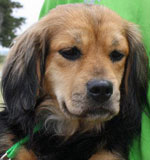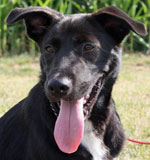The ABCs of Transporting
Volunteering to help animals in need can be one of the most rewarding endeavors you can ever imagine. We make it easy to volunteer with us! If you are new to us we ask that you provide us with the information we need to keep in touch! Please see the " Help Needed" Tab for our How To Help Page.
We post our upcoming run information and volunteer requests via two methods; via direct email to our volunteer database and by way of our "Sign Up Genius". Once all of our volunteers are in place for the transport, a Final Run Sheet is emailed to the volunteers and all persons involved in making sure the transport go smoothly! Now that you have volunteered, there are a few "rules" in place to ensure that the transport goes smoothly and without incident.Drivers and Overnight Hosts: These rules, guidelines and regulations may change from time to time. Please check back often:

Drivers
Drivers are the backbone of any transport! Driver´s for Mobile Mutts are a special breed. We pride ourselves in our safety record and in our ability to safely deliver our passengers over enormous
distances with minimal stress. In order to do that, we have developed some rules/guidelines for our volunteers.
BEFORE TRANSPORT:
♥ Please make sure your cell phone is fully charged and ready to go! As silly as this sounds, make sure your ringer is on and that your voice mail is set up to accept messages that we might have to leave for you.
♥ When you receive the Final Run Sheet, please review your contact information for errors and report them to the Transport Coordinator so they can be corrected prior to transport.
♥ Please take a moment to review the Transport Leg you are scheduled to drive at least 24 hours prior to transporting. Make sure you are familiar with your
route and with the locations of your assigned handoff locations.
♥ For the safety of your "personal pets", we do not recommend you allow them to ride along with you on transports.
♥ Make sure crates being used during transport are clean and functional.
♥ "Teathering Dogs In Vehicles" refers to allowing a canine passenger to be uncrated and either tied or freeriding in a vehicle; for your
safety and the safety of your passengers no more than one teathered dog is permitted in a vehicle. Exceptions will be considered, but it is simply not advisable.
♥ Plan to arrive at your pick up location at least 15 minutes prior to the scheduled meeting time.
♥ For your convenience, please either print or carry an E-Copy of the Final Run Sheet for a quick reference to pertinent information,
such as phone numbers and vehicle descriptions.
DURING TRANSPORT:
♥ When the transport begins a "head count" of all passengers must be done and the passenger list checked to make sure that only
the dogs that have been issued "boarding passes" are allowed to board the transport. Any discrepancies in the number of passengers or in their description must be reported to the designated transport monitor immediately.
This is especially important on legs where "passengers" are boarding from shelters.
♥ When possible all drivers picking up passengers should park together in a group, and all drivers dropping off should park in a group.
This just makes the loading and unloading process a lot smoother and quicker.
♥ Unless you have medical or physical limitations, or are under the age of 16, all volunteers should help unload, walk,
water and reload passengers. Please make sure to clean up any mess left behind at your handoff location.
♥ All volunteers arriving to meet the transport and pick up their passengers from the inbound drivers should arrive 15
minutes ahead of the transport´s scheduled arrival time and put out bowls of water for our passengers. Once the transport arrives, volunteers are expected to assist in walking and
helping to board the passengers, unless you have physical limitations or medical issues preventing you from doing so.
♥ Inbound drivers are expected to clean up any messes left behind by our passengers at the handoff location once the
transport has left. Please make sure to leave the handoff location the way you found it.
♥ All paperwork must be kept together and handed off to one driver on the next leg prior to any passengers being unloaded. Please hand over
the paperwork to a driver on the next leg before you unload your passengers! Please be aware of any "comfort " items travelling with the passengers
and make sure they accompany him/her on their journey.
♥ Please double leash all passengers during hand-offs. A clip lead attached to a collar is not enough to safely move
passengers between vehicles. Dogs can easily back out of collars, or collars can snap and break. Please use a slip lead in addition to the clip lead. Please
check that all collars are secure before allowing a passenger out of your vehicle. Consider all passengers a flight risk... they will run if given the opportunity. Don´t
let it happen to you, it is the worst feeling you will ever have.
♥ While loading and unloading passengers: NEVER walk more than one dog at a time. All dogs must remain at a safe distance
from one another (double the leash length or more is a good rule of thumb) 8-12 feet, and should never be walked close to vehicles who are loading and unloading
dogs. For everyone´s safety, they must remain a safe distance from the vehicle and wait their turn before approaching a vehicle to board!
♥ We often carry unaltered passengers on our transports, and unaltered can lead to a whole new set of challenges on
transport. For your safety, and the safety of the dogs, we highly recommend not having more than one unaltered male out of a vehicle
at a time. Wait until he is re-boarded safely before allowing the next one out of a vehicle.
♥ Any puppies designated “no paws on the ground” (under four months old), passengers who appear to be ill, or those who require
“special handling precautions”, should be unloaded last. (see special handling instructions below).
♥ Once you´ve unloaded your passengers, please double check that all crates are empty and that anything that is travelling with
them has accompanied them. Sometimes a cherished toy is left behind and it could be a comfort item for your passenger.
♥ Please remove leashes from your passengers prior to closing and securing the crate. Leashes can be attached to the outside of the crate door so they
travel with the passenger on the trip. Leashes left inside the crate often become chew toys.
♥ Before any driver leaves the handoff, a passenger headcount should be completed. Any discrepancies
must be reported immediately to the monitor or coordinator. All vehicles and crates should be double checked to ensure that they are empty. I cannot stress this too much!
Early driver departures can result in stranded dogs! Stranded dogs are not cool.
♥ One driver per leg must call the designated monitor or coordinator to report the time the
transport left, and any
health or behavior concerns observed. PLEASE pass along any
health or behavior concerns to the the drivers on the next leg as well as to the transport monitor.
♥ Multi-Leg Drivers, drivers should always stop and assist their fellow volunteers in loading their vehicle, even when
they are driving multiple legs and could otherwise skip the stop. Please be courteous and lend a
hand! It doesn´t make sense to arrive early and have to wait for the transport to catch up to you! We call it leapfrogging and it is not cool. For safety you
should always travel in a group.
♥ While travelling, should you encounter significant delays, or are running ahead of schedule (more than 15 minutes
is a good guideline) for any reason, please call the transport monitor/coordinator who will notify the drivers on the leg ahead of you.
♥ We encourage taking pictures of your passengers and just ask that no one´s safety be compromised in doing so.
♥ CHILDREN ARE OUR FUTURE RESCUERS; however for safety we do not allow children under the age of 16 to handle dogs on leashes.
Dogs on transport tend to act out uncharacteristically; they tend to be overly stressed and sometimes act out. We do not want children to put in the middle of what
can be nasty altercations between our passengers and therefore do not allow children to handle or walk our dogs while leashed. We respectfully ask that young children
remain in vehicles while our passengers are being transferred.
♥ Medications: Do NOT give any passengers ANY type of medication - herbal, homeopathic, prescription or over the counter - without
the permission of the Transport Coordinator. Dogs can have allergic reactions just as human beings can! The only exception is if a passenger is traveling
with medication prescribed for them – then it should be given to the dog as prescribed under the direction of the coordinator.
♥ TREATS: Please limit your generosity with treats during transport. Please do not give passengers rawhide or "bones" during
transport. They can cause medical problems and can lead to aggressive behavior.
SAFE HANDLING OF PUPPIES:
PLEASE NOTE: (this also applies to any dog who seems ill on transport or are "acting out")
♥ Puppies under the age of 16 weeks (four months) must travel in a crate (preferably a hard sided crate, if using
a wire crate, the crate should be covered). Under NO circumstances are puppies allowed to touch the ground, or any hard surface during stops/handoffs.
This is necessary to minimize their exposure to germs and illness as much as possible.
♥ Litter mates are allowed to be crated together, but under no circumstances should non-litter mates be mixed.
♥ No matter how adorable they are, they should remain crated until all the other passengers have been re-boarded for the next leg.
♥ Puppies should be moved last, handled by only one person, and that person is encouraged to wear disposable latex gloves.
This is for their safety and to minimize the potential of cross-contamination of diseases they may have contracted. One disease can infect puppies at lightning speed.
♥ For efficient loading, you can carry puppies in a “laundry basket” this eliminates over handling of puppies!
♥ Larger/older puppies under 4 months old should have a slip lead attached to them while carrying them between vehicles. They
are naturally curious and excited and will often attempt (sometimes successfully) to leap out of your arms.
♥ Whenever a momma and puppies are crated together, Mamma is allowed to be on the ground during handoffs, however her paws,
and any part of her that touched the ground, must be sanitized before she is allowed to crate with her puppies!
What happens if a dog becomes sick or is injured during transport? Should a pssenger become ill or is injured on transport, the transport monitor must be contacted
immediately. They will gather the facts, the symptoms and observation that you are reporting and contact the transport coordinator. The situation will be assessed and if it is
deemed necessary to seek veterinary care we will contact the rescue whose decision it is ultimately theirs to make. Every attempt will be made to contact the receiving/responsible
party. Should we be unable to reach the rescue, the transport coordinator will make the final decision. However, no dog that needs medical care will be denied if it is deemed necessary.
SEASONAL TRANSPORT TIPS
When summer heat is upon us there are a few considerations for the safety of our drivers and passengers:
♥ When possible park in the shade and park in such a way that the dogs will not be jumping out of the car directly
onto blacktop which can burn sensitive paw pads. If possible, carry a tarp to place on the ground.
♥ Walk your passengers in grassy areas away from heat sources (such as your vehicles exhaust pipe).
♥ HYDRATE! Carry extra water to offer your passengers and pack a bottle of unflavored pedialyte or Gatorade in your transport kit to add
to their water (4 parts water to 1 part Pedialyte/Gatorade). This helps hydrate them without messing up delicate electrolytes. This is especially helpful for
puppies and seniors!
♥ LEAVE YOUR AIR CONDITIONER RUNNING WHILE LOADING AND UNLOADING YOUR PASSENGERS!
♥ Consider purchasing crate fans to circulate the air in the crates (especially if you use hard sided crates or if you are
carrying puppies. They are relatively cheap (under $15 online).
Winter brings a whole new set of challenges:
♥ Check your tire pressure and windshield washer supply
♥ Check the footing in the handoff location to make sure it is free of ice; Not safe? Consider adjusting
the handoff location to a safer location.
♥ Consider offering passengers water when they are crated or out of the winter weather.
♥ Leave your vehicle running and the heat on when you have passengers on board
♥ Always drive according to road conditions and not focusing on the need to
remain on schedule
♥ Travelling together as a group is never more imiportant than in the winter.
Helpful Supplies To Have On Hand:
♥ Clean up supplies - blankets, towels, paper towels, bedding for crates, baby wipes, hand sanitizer, plastic bags/poop bags, etc.
♥ Extra leashes, collars, etc. are handy in case a dog breaks/chews one.
♥ Water bowl and water to offer the dogs water at each stop.
♥ A pen and paper to record notes needed to pass along to other drivers along the way.
AFTER THE TRANSPORT
Please thoroughly clean and disinfect all crates, bedding and whatever was used on the transport.
We also recommend using a spray such as lysol on the interior of your vehicle so that you are ready to go for next time!
OVERNIGHT HOSTS
Because our transports are always two or three day events, we cannot move a dog from a shelter if we do not have a place for him/her
to crash overnight. The number of overnight hosts we have available directly impacts the number of dogs we can move on a particular
transport, making the overnight host one of the most important roles on a transport!
♥ Please arrive prepared to move your overnight guest to your home. Have an appropriate crate if necessary.
♥ Please see the coordinator at the handoff to receive your guests "boarding pass".
♥ Please pick up food for your guest from us. Unused food can be returned and will be used by another dog next week.
♥ We often have small toys available and you are welcome to take one for your guest. If they become attached to the toy it can travel
with them.
♥ Please check his/her collar and leash for security. If a replacement is needed, please see the coordinator at the handoff and one
will be provided to you.
♥ Overnights in Champaign, please make sure to have your guest´s picture taken by our photographer before you take them
home!
♥ Once you get home we recommend either isolating your guests from your personal pets or providing
safe and slow introductions between them. Sometimes it can take them a little while to decompress from their day. They are often tired and confused by all of the
day´s excitement. Often they have never been inside a home and may not know how to behave.
♥ Please feed them their dinner at an appropriate time and feed them away from your personal pets.
♥ Crating your houseguest is totally acceptable, especially overnight.
♥ Bathing and grooming them is entirely up to you.
♥ With the exception of puppies, please do not feed your guest in the morning before they get back on transport. Puppies
should be fed at least an hour before transport, two hours is better.
♥ Please arrive at least 15 minutes before the scheduled departure time in the morning. In Champaign you should arrive at
6:45 am. Upon arrival, please check your guests in with the designated coordinator Walk and potty your guest away from the others and wait for boarding instructions.
OFF TRANSPORT ADOPTIONS ARE NOT ALLOWED!
If you fall in love with your guest you must satisfy the adoption requirements of the receiving rescue. The guest should continue to their rescue as planned, and be vetted by the receiving
rescue. We can arrange a reverse transport to bring them home to you should you be approved to adopt. Please keep in mind, some of our passengers already have adoptive homes waiting
for them and there are many still waiting in shelters who need to be saved. We´d be happy to work with you to find the "perfect" dog for you.

